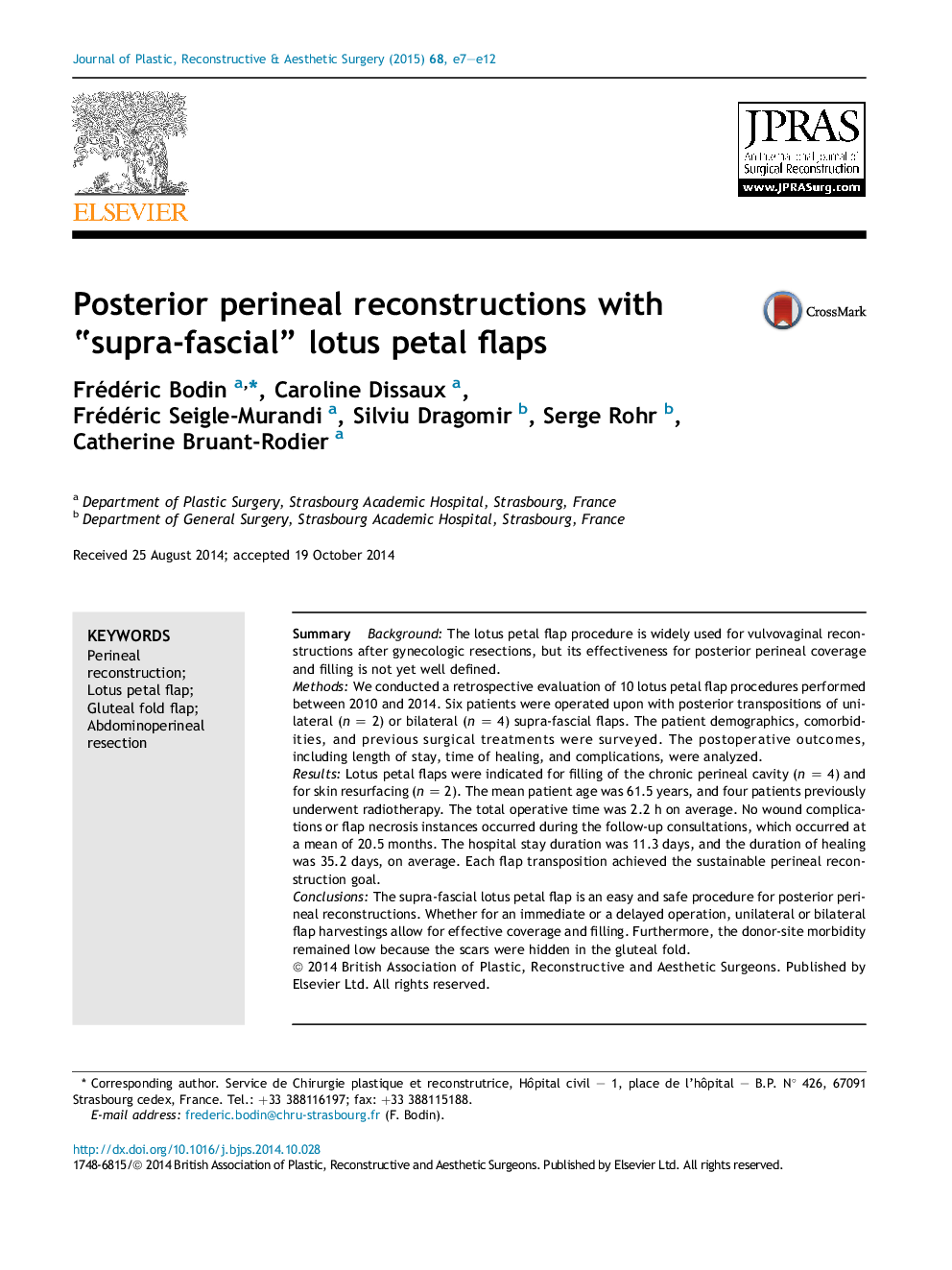| Article ID | Journal | Published Year | Pages | File Type |
|---|---|---|---|---|
| 4118339 | Journal of Plastic, Reconstructive & Aesthetic Surgery | 2015 | 6 Pages |
SummaryBackgroundThe lotus petal flap procedure is widely used for vulvovaginal reconstructions after gynecologic resections, but its effectiveness for posterior perineal coverage and filling is not yet well defined.MethodsWe conducted a retrospective evaluation of 10 lotus petal flap procedures performed between 2010 and 2014. Six patients were operated upon with posterior transpositions of unilateral (n = 2) or bilateral (n = 4) supra-fascial flaps. The patient demographics, comorbidities, and previous surgical treatments were surveyed. The postoperative outcomes, including length of stay, time of healing, and complications, were analyzed.ResultsLotus petal flaps were indicated for filling of the chronic perineal cavity (n = 4) and for skin resurfacing (n = 2). The mean patient age was 61.5 years, and four patients previously underwent radiotherapy. The total operative time was 2.2 h on average. No wound complications or flap necrosis instances occurred during the follow-up consultations, which occurred at a mean of 20.5 months. The hospital stay duration was 11.3 days, and the duration of healing was 35.2 days, on average. Each flap transposition achieved the sustainable perineal reconstruction goal.ConclusionsThe supra-fascial lotus petal flap is an easy and safe procedure for posterior perineal reconstructions. Whether for an immediate or a delayed operation, unilateral or bilateral flap harvestings allow for effective coverage and filling. Furthermore, the donor-site morbidity remained low because the scars were hidden in the gluteal fold.
